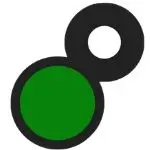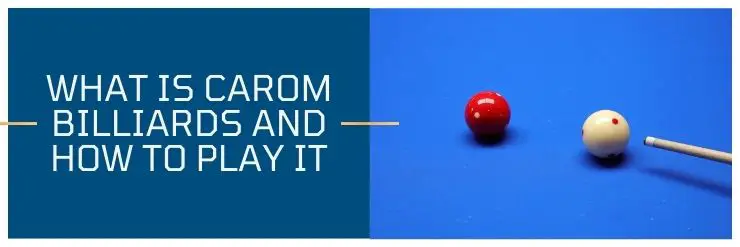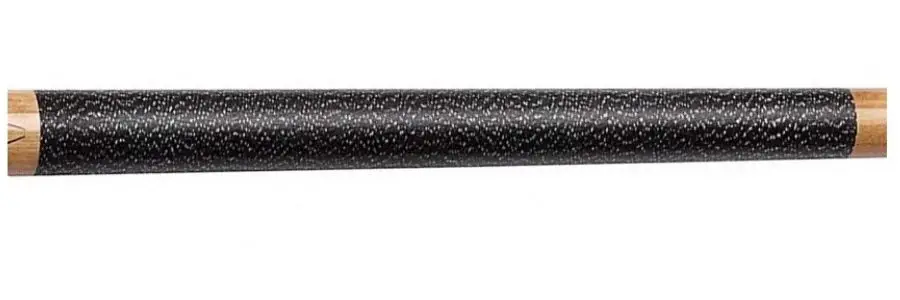Ever found yourself playing at a bar with a friend who has just scratched and wondered; how the table knows to return the cue ball but not the other balls? How does it seriously know which is the cue ball and which isn’t?
I mean, how exactly does a non-living object like a pool table know how to separate one ball from a total of 16?
The truth is pool tables, especially the coin-operated ones you find in bars and restaurants, have a ball return system. In this article, we look at how pool tables recognize the cue (white ball).
A quick look at coin-operated pool tables
How does a coin-operated pool table work?
When balls sink into the table pockets, they go to a storage area just below the playing surface. They are held in the storage by a stop member and a hinged spring-biased platform which prevents the balls from being released into the compartment. When all the balls are sunk, players have to insert a predetermined coin into a coin-actuated lever which then releases the balls.
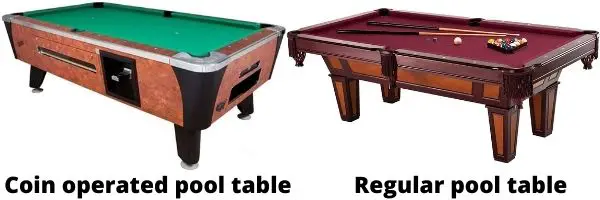
However, the cue ball doesn’t follow a similar trajectory.
So, how does a pool table recognize the white all? The pool table’s ball return system can recognize the white ball because it is either slightly larger or smaller than the other balls or is fitted with a magnetic center.
If it is bigger, then it can’t pass through the return chute like other balls and it is therefore diverted back to the compartment so players can continue with the game. If it is fitted with a magnet, it triggers a sensor that redirects it into a different depository. Other cue balls may be covered with metal so a magnet inside the pool table can direct it into position. The rest of the balls don’t have a magnet/metal so they simply follow the same track into the aforementioned storage compartment. Read on for a more detailed explanation.
Recognizing bigger cue balls
As mentioned, some white balls are slightly bigger than the rest of the balls. They are only slightly bigger, mostly 2mm wider in diameter compared with the other balls.
However, pool tables with a ball return system can recognize the cue ball no matter how slightly bigger it is. Such pool tables have a radius measuring device that separates the larger (cue) ball from the rest.
This helps the table divert the cue ball into a different track where it is directed to the orifice at the side of the table. The rest of the balls are directed to a storage chamber from where they are released after inserting a coin. This pool table ball return system is typically used in older pool tables.
While the system is pretty straightforward, some professional and die-hard pool players don’t like using a cue ball with a larger diameter. They claim it messes their shots which generally affects their game. It may not affect your play if you play pool for fun, but advanced players generally have a problem with the bigger cue ball. However, this type of pool table is common in many bars and restaurants with professionals preferring better, modern pool tables.
Magnetic cue ball return systems
A pool table with a magnetic cue ball return system relies on a magnetic cue ball. Unlike the bigger cue ball, magnetic white balls are of a similar size to the numbered balls. However, the cue ball is fitted with a small metal inside. A magnetic detector inside the pool table then detects the cue ball and pulls it into a different track where it is returned to the player.
More recent cue balls have a thin metal coating with a strong magnet placed at the balls separation area, helping guide it to a different track. This system works seamlessly and is available in more recent pool tables.
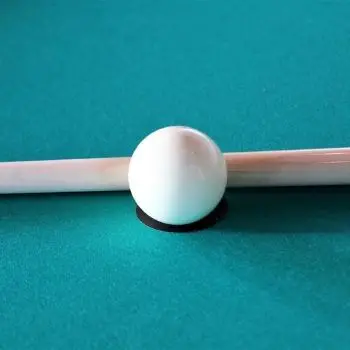
However, magnetic cue balls are slightly expensive compared to their oversized counterparts. They generally cost around $15, with the oversized cue ball fetching anywhere between $4 and $7. Because magnetic cue balls have a similar size to the numbered balls, they generally don’t affect play and are therefore preferred by professionals.
The magnetic cue ball has its disadvantages as well though. Because of the magnet, some players claim it lacks a true roll which generally affects play. It is also prone to shatter when it hits a hard surface, for instance, a concrete floor.
Which one to pick between a bigger and magnetic cue ball?
Well, both cue balls (and ball recognition systems) work pretty seamlessly, especially for casual players. However, advanced players used to standard balls may struggle with bigger cue balls. On the other hand, the magnetic cue ball can roll differently although generally, this doesn’t affect play. You can find coin-operated pool tables using either of the cue balls and recognition systems.
If you play pool for fun at home or in your local bar, both should do a perfect job.
Pool tables can be mysterious and we hope this article has helped unravel some of the mystery. Meanwhile, let’s go rack them up!
Wrap Up
So, how does a pool table recognize the white ball? The pool table’s with a ball return system can easily recognize the white ball because the cue ball is either slightly larger or smaller than the other balls or it is fitted with a magnetic center.
Rob is an avid player and fan of all cue sports, particularly 8-ball, and snooker. He has competed in a few local 8-ball tournaments and although he is not a professional, he can compete with the best of them.
